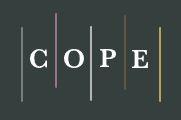Disclosure: This page may contain affiliate links. This means, at no additional cost to you, we receive a commission if you click through and make a purchase.
Much effort has been spent providing guidelines as to how you can spot a predatory publisher/journal, so that they can be avoided.
We suggest that this is the wrong approach. Instead, you should look for legitimate journals and, if you have any doubts, you should simply move on and look for another journal.
The world is not short of legitimate journals and predatory journals are not filling a gap, where outlets do not exist. Rather they are exploiting the innocent, or assisting those who either want an easy life, to bolster their CV or want to con their peers into giving them a job or promoting them.
If we only ever targeted legitimate journals, then we can not only stop legitimate scholars wasting their time by trying to avoid predatory journals, but we would also identify those scholars that use predatory publishers for their own, nefarious, means.
Identifying non-predatory journals
In a previous article we asked “How do you identify a non-predatory journal?“. The aim of that article was reverse the tables and instead of trying to work out if a journal is predatory, to work out if a journal was legitimate.
We won’t repeat the information in that article, if you are interested, please take a look.
There are a few other things you can, which we did not cover in the previous article. For example, if you have access to Cabells service, you can check if the journal is on their white list, or black list (which would indicate that the journal is predatory). On its web site Cabells describes itself as:
“Since its founding almost 40 years ago, Cabells has expanded its services to include systems for identifying both journalytics and predatory journals, manuscript preparation tools, and a suite of powerful metrics to help its users find the right journals, no matter what stage of their career. The searchable Journalytics database includes 18 academic disciplines from more than thirteen thousand international scholarly publications.“
Cabells is a subscription service, so not everybody will be able to access this resource.
With regard to Cabells, it is not unknown for a predatory journal to say that they are listed on their database, but they ‘forget’ to mention whether they are listed on the black list or the white list. If you do not have access to the Cabells service, you should take with a pinch of salt any claims that publishers or journals make.
Another useful resource is the Directory of Open Access Journals (DOAJ). On its web page DOAJ says:
“DOAJ is a community-curated online directory that indexes and provides access to high quality, open access, peer-reviewed journals. DOAJ is independent. All funding is via donations, 22% of which comes from sponsors and 78% from members and publisher members. All DOAJ services are free of charge including being indexed in DOAJ. All data is freely available.“

DOAJ can be used to look up an open access journal to see if it registered with them. If it is, it is a good indication that the journal is not predatory. It is important to note that DOAJ is only interested in open access journals and does not hold details of traditional journals. So, if you search for a traditional journal on DOAJ, it will not be listed, but this does not mean that it is predatory.
We have written an article specifically about DOAJ. If you are interested take a look at “What is the Directory of Open Access Journals?“

Another useful resource is COPE (Committee on Publication Ethics) . COPE, according to its web site:
“… provides leadership in thinking on publication ethics and practical resources to educate and support members, and offers a professional voice in current debates.“
Publishers and journals register with COPE and, by doing so, agree to uphold the publication ethics that COPE defines. This includes areas such as who should be an author on a paper, editorial boards and peer review. If a journal or publisher is a member of COPE it is a strong indication that they are a legitimate publisher/journal.
What should you do?
From our previous article and the additional information above, you might think that we are suggesting that you should be trying to identify legitimate journals, rather than predatory journals and you would be right.
Too many people look at a journal and try to work out if it is predatory. Following the advice from many papers that have been written on the topic, they look at the web site (to see if it is well designed, the English is good etc.), they look at the email they received asking them to submit (again looking for English, grammar etc.), they look at the promised review times (are they too fast), they look at previous issues, they look at the editorial board, they look at how the journal can be contacted; and a whole load of other indicators. You might also want to look at an article that we wrote that also offers some advice; “Three quick ways to spot a predatory journal“.
We would encourage you to try to establish that a journal is legitimate, as it may be easier than trying to establish that a journal is predatory. Of course, there are easy ones to decide in either camp, but there are significant grey areas where differentiation becomes difficult.
There is so much more to go on when you are trying to establish the credentials of a legitimate journal, rather than the opposite, as you have more information from reputable companies. Once you start trying to validate a predatory journal, with all the smoke and mirrors that this entails you can find yourself down a rabbit warren from which you may never emerge.
Conclusion
The world is not lacking journals. In any given disciplines there are likely to be tens, if not hundreds, of legitimate journals that you can submit your article to. You do not need to angst over whether a journal is predatory or not. If, after analyzing a journal, you cannot be sure that it is legitimate, just move on to the next one.
In our view, it is a lot easier to ascertain whether a journal is legitimate, than it is to ascertain whether it is predatory. Why not adopt this approach when deciding which journal to submit to.



